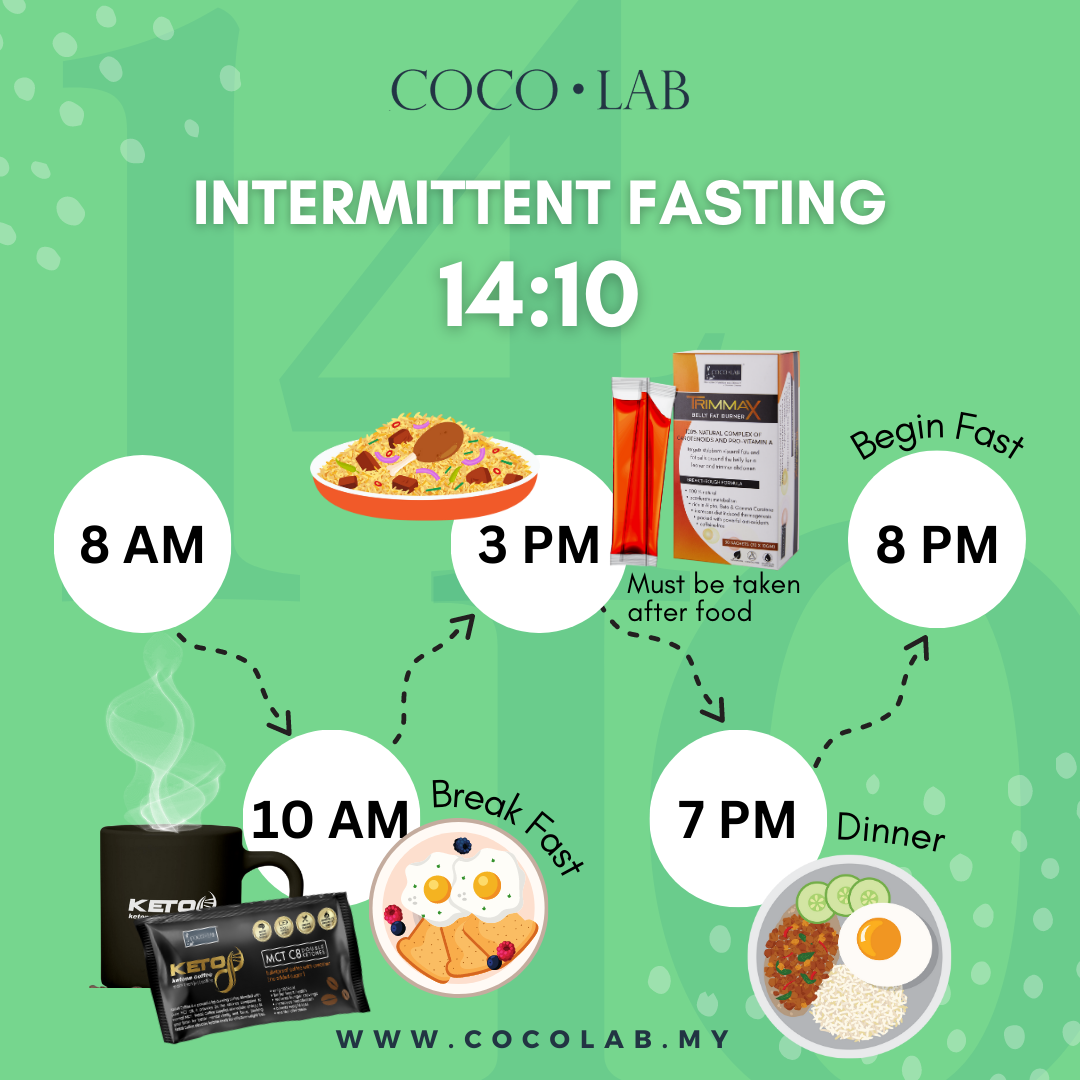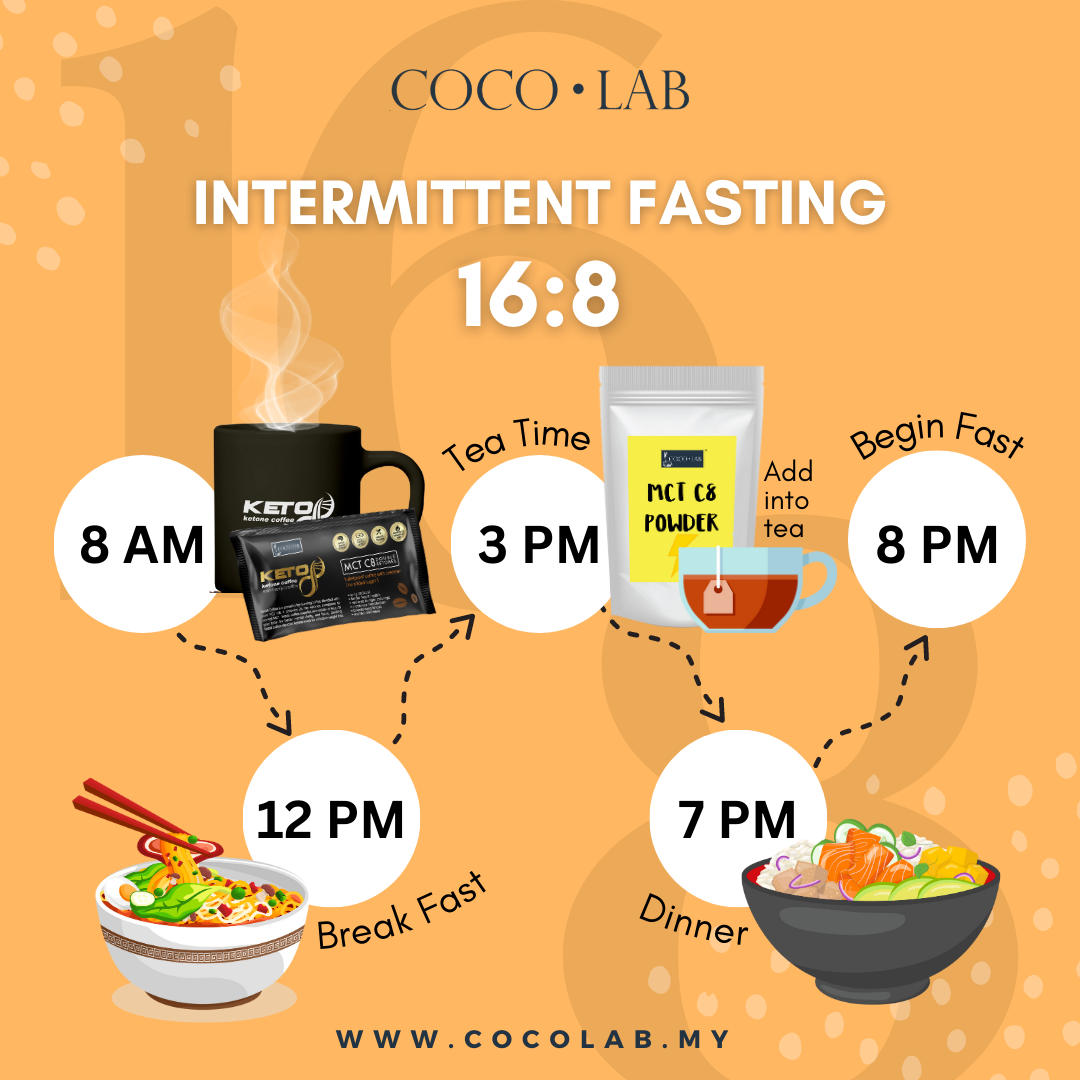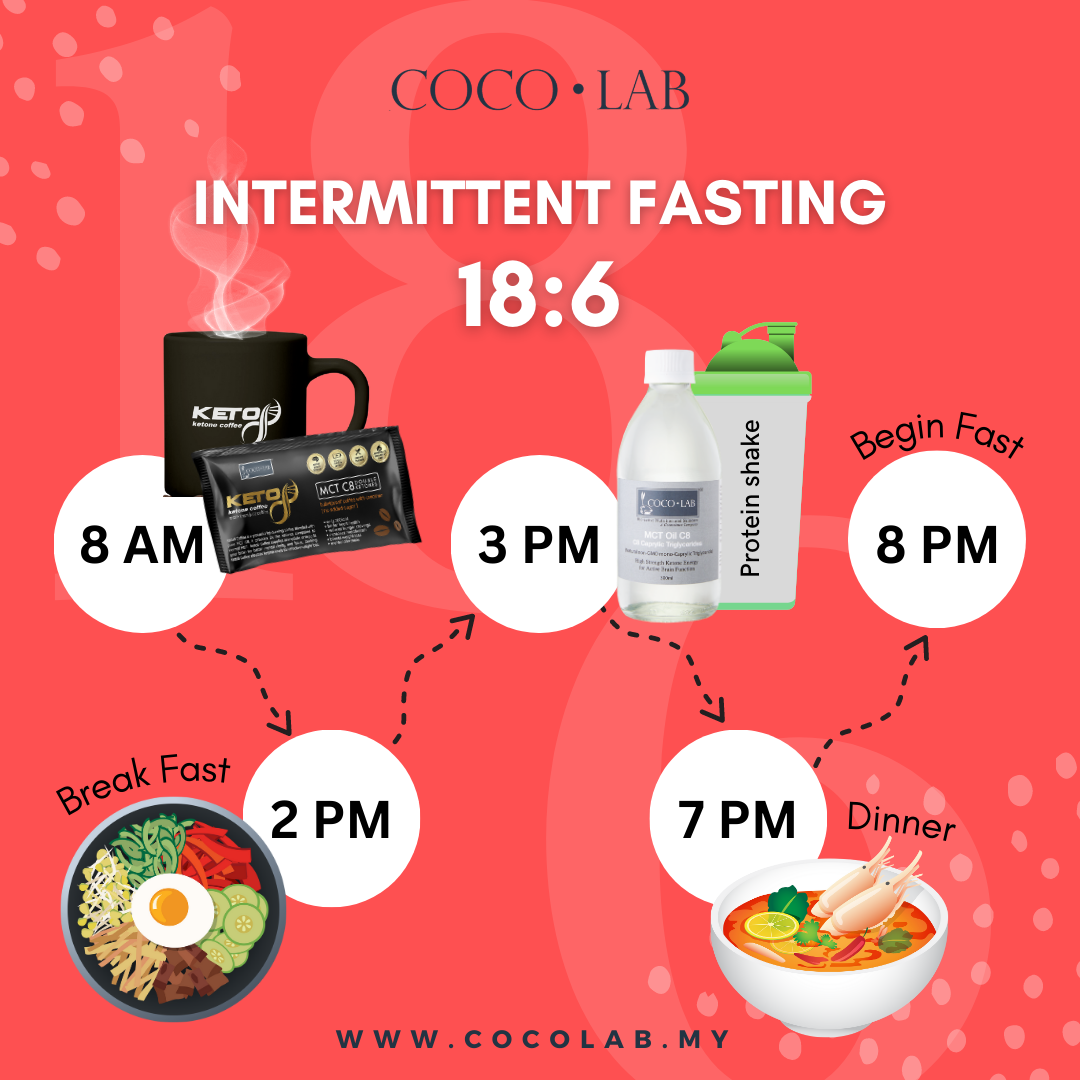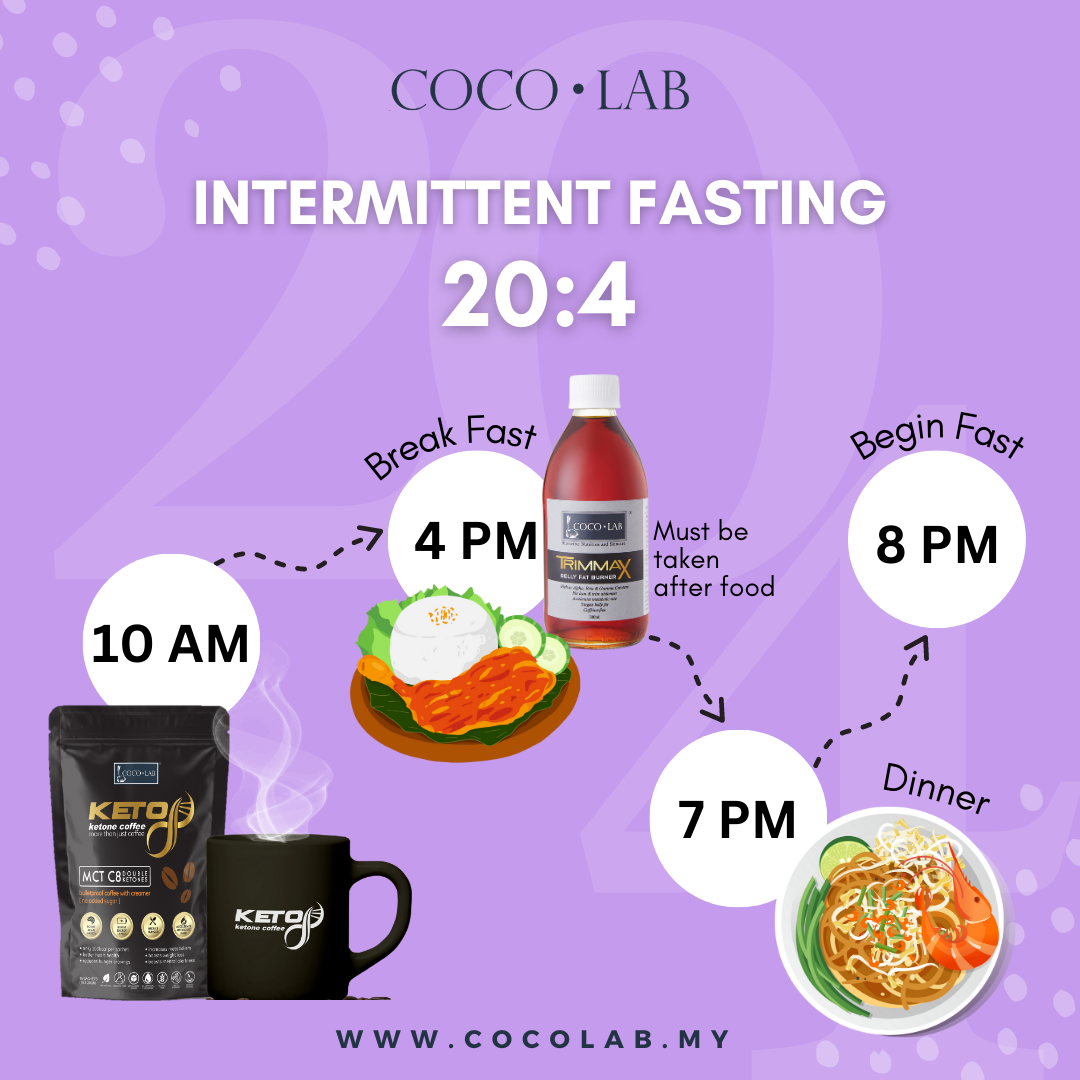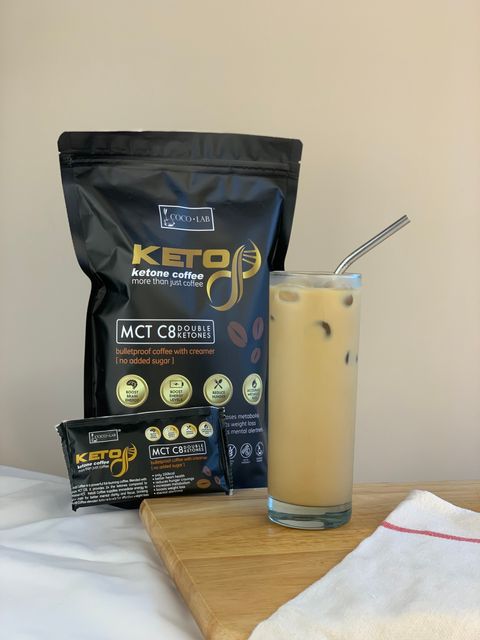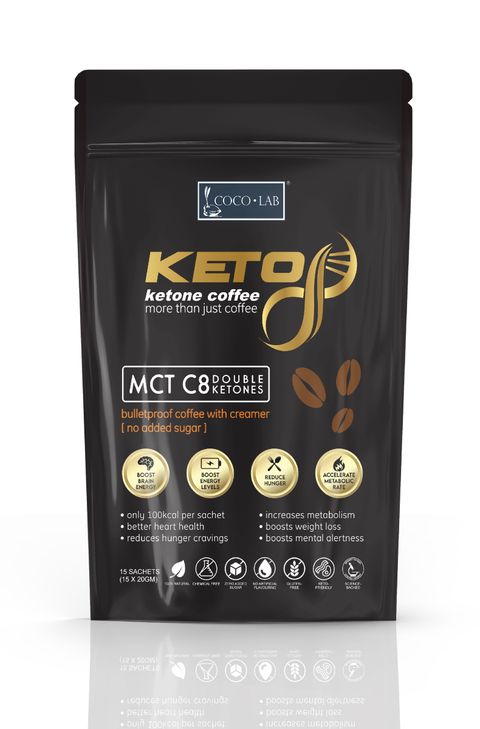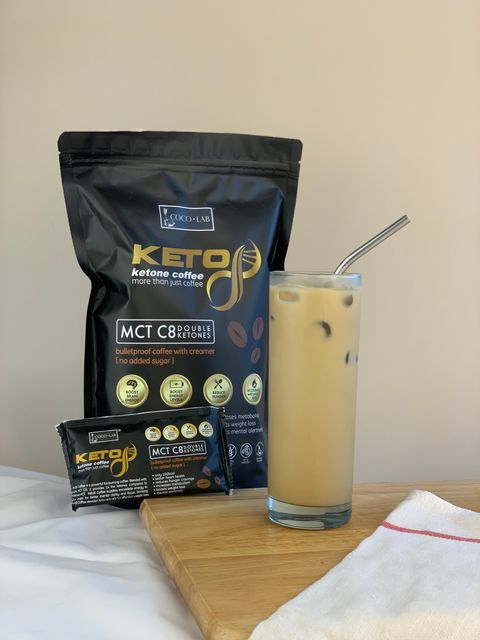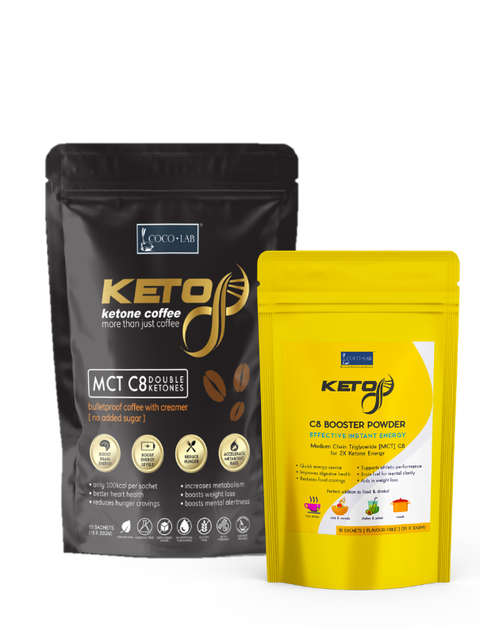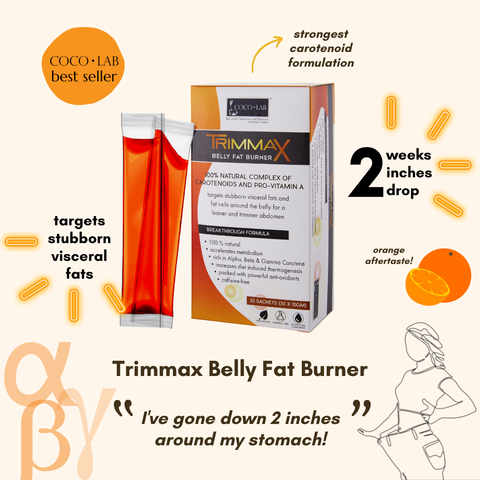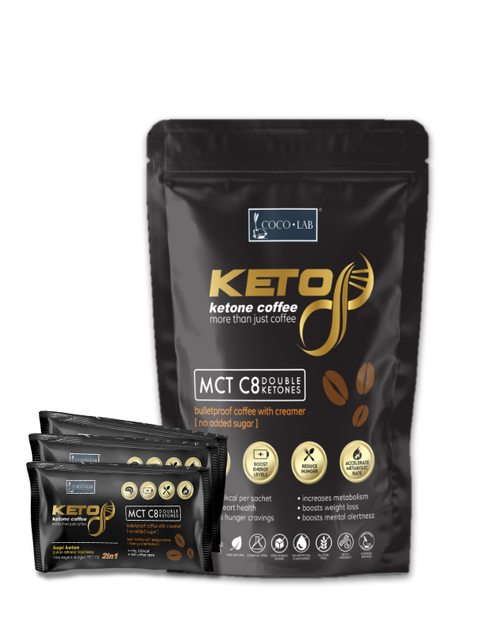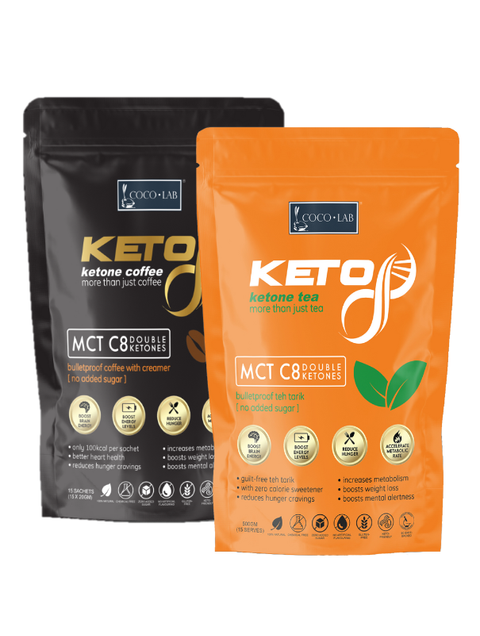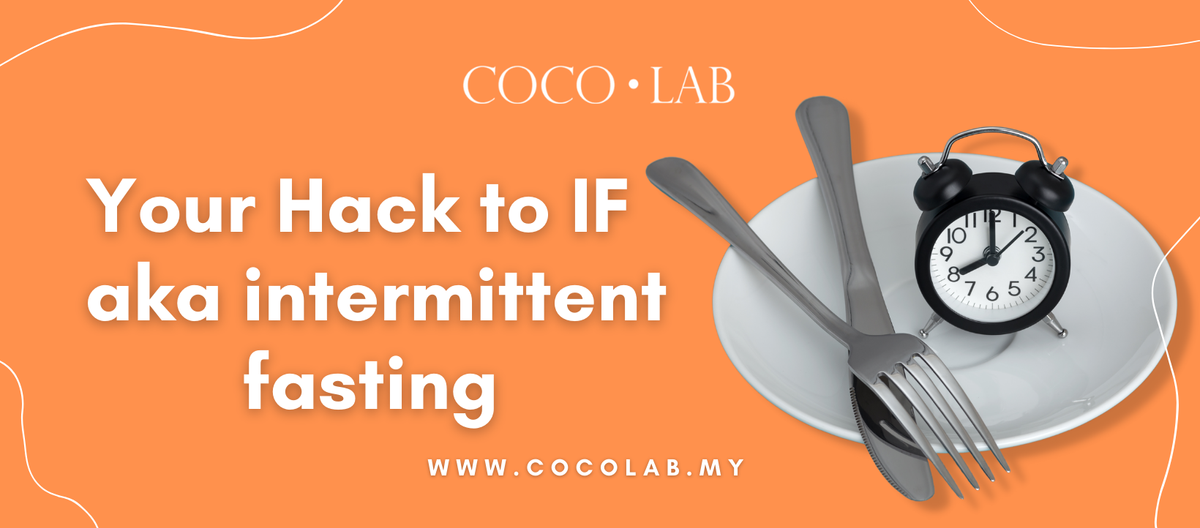
Your Hack to IF
- What is Intermittent Fasting?
- Benefits of IF
- How Does it Work?
- Is IF suitable for Me?
- Types of IF
- How to Begin IF & How to Stick to it
(untuk versi Bahasa Melayu, sila tekan pautan ini)
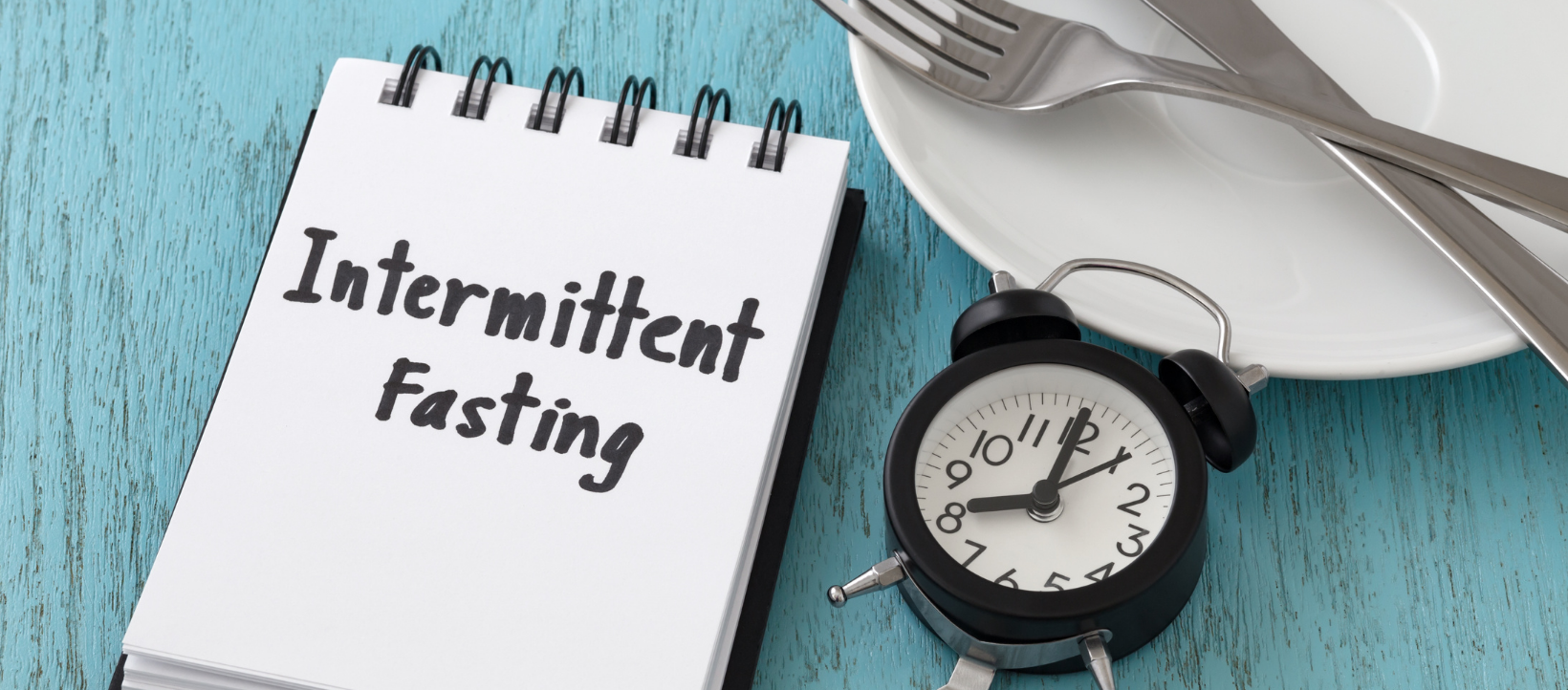
WHAT IS INTERMITTENT FASTING?
Intermittent Fasting or better known as IF, is an eating pattern that requires you to fast continuously for a period of time, and eat in the next period of time. Instead of the usual breakfast around 9am, lunch around 1pm and dinner around 7pm, IF may sound a lot more like breakfast AND lunch around 2pm and dinner at 8pm. By 9pm, you would have begun your fasting period, right into your sleep, going past your “usual” breakfast at 9am, and finally breaking your fast again around the 2pm mark.

While this may sound daunting to IF beginners, to many who are already on IF, this is merely a change in their eating hours. Most IF cycles do not even specify WHAT you can or cannot eat, but it does specify WHEN you can eat by giving you a certain “eating window”. In a way, it is less restrictive than most diets that require food changes and stipulate the maximum amount of calories allowed. Many tend to think of IF as a food clock rather than a food weighing scale.
BENEFITS OF IF
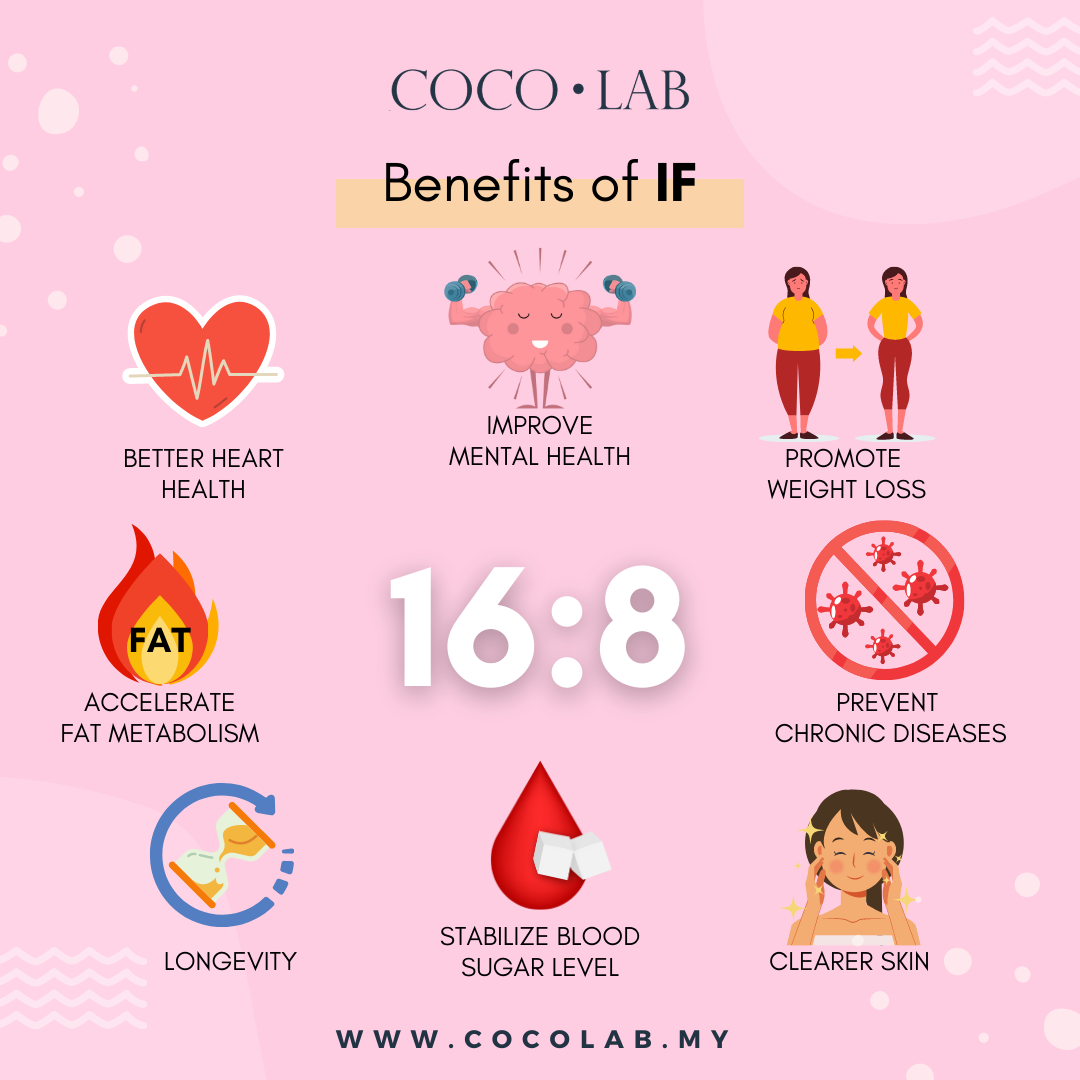
There are many benefits to IF and depending on what your goal is, IF may be part of the solution too.
The biggest benefit to IF is the reason most people begin IF and that is for weight loss. Fasting itself is a method to weight loss as it usually involves caloric deficit, but IF is more structured in terms of hours and allows you to still consume food during your eating window[1].
Many people find that IF is one of the biggest reasons they are able to achieve their dream weight and also the reason they are able to maintain it. Through IF, your body begins to increase your metabolic rate, making it easier to burn off food or fat as you go along your day[2].
IF puts your body in a fasting state, allowing your body dedicated time and energy to correct itself. This includes correcting hormonal levels such as insulin[3]. Many make IF part of their lifestyle as it helps them to stabilize their blood sugar levels. Other hormones that undergo check and balance are your hunger hormones such as leptin and ghrelin, giving you better ability to feel full or have less hunger pangs.
Other benefits include better mental focus and mental health when keeping a healthy diet with IF. Studies show that there may also be certain anxiety relief when practicing IF for the long term[4].
Of course, with a better-functioning body system, IF helps in longevity, giving you a better quality of life as your health improves[5]. This includes better heart health and even helps to prevent the risk of chronic diseases developing[6].
For those looking for aesthetic reasons other than weight loss, IF is also great in giving you better skin. Your body and organs, such as your skin, go through regular repair, as IF gives your system enough “free time” and focus on building more stem cells needed for skin[7].
HOW DOES IT WORK
How exactly does IF work in your body? In essence, your body is a constant working machine. Eating and digesting what you have eaten takes a considerable amount of energy and time. The effort spent on this activity takes up time needed on other areas of the body. Giving your body a time for fasting and a time for eating, allows the body to firstly digest what has been consumed for energy and use the rest of the fasting period to carry out necessary repair works around the body through a natural process called autophagy[8]. This process is triggered into action when your body is in a starvation mode, and it looks into recycling waste into energy, carry out cellular repair work, and even produce material needed for new cells.
Even a small snack within this fasting period brings these repair works to a halt as the effort and energy is shifted back to digesting[9]. This is why IF cycles have a longer stretch of fasting hours and eating hours are usually shorter, rather than smaller meals or smaller snacks consumed throughout the day, every now and then. It ensures that the body is given enough continuous time to carry out repair works before focusing on digesting food again.
IF also allows your body to enter into ketosis. Once food has been digested, our body begins to tap into our energy reserves, aka fat. This can only happen when the usual energy sources, carbohydrates or glucose, have been completely used off. Your body begins to reach to fat storage, repacking them into smaller energy sources known as ketones and use that as fuel instead, eventually entering into a state of ketosis. In fact, intermittent fasting may help your body reach ketosis quicker than keto diet itself[10]. By training your body regularly to burn fat during your fasting period, your body learns how to efficiently manage fuel sources, effectively helping you lose weight faster.
IS IF SUITABLE FOR ME?
Fasting is not new and IF is widely practiced by all sorts of people. In fact, our ancient hunter-ancestors would have practiced this as they would have only 1 meal or catch of the day and maintain their energy reserves for the rest of the day and night.
In a modern world, IF practitioners can range from athletes, to working executives and even for women with PCOS. Is IF suitable for you? Generally, yes but you should always consider your lifestyle and any other health conditions you may have.
Some athletes practice IF as a method keep them mentally at their peak, allowing them have better quality rest and function better during a competition[11]. IF also helps to increase their ketone levels. As ketone energy works faster than normal sources of energy, this may be particularly useful in their performance.

Working executives can also benefit from IF, giving them better focus at work as their mental clarity improves. IF is also able to reduce brain fog. In terms of rest, IF helps adults achieve a better state of rest or sleep, vital for optimum work output in the office[12].
If your body has high glucose levels, high blood sugar or if you have insulin resistance, IF can help. Insulin resistance occurs when the body does not know how to react correctly to glucose, causing your body to store more glucose rather than metabolize it. But IF gives your body the time to correct this and also tap into the excess glucose storage.
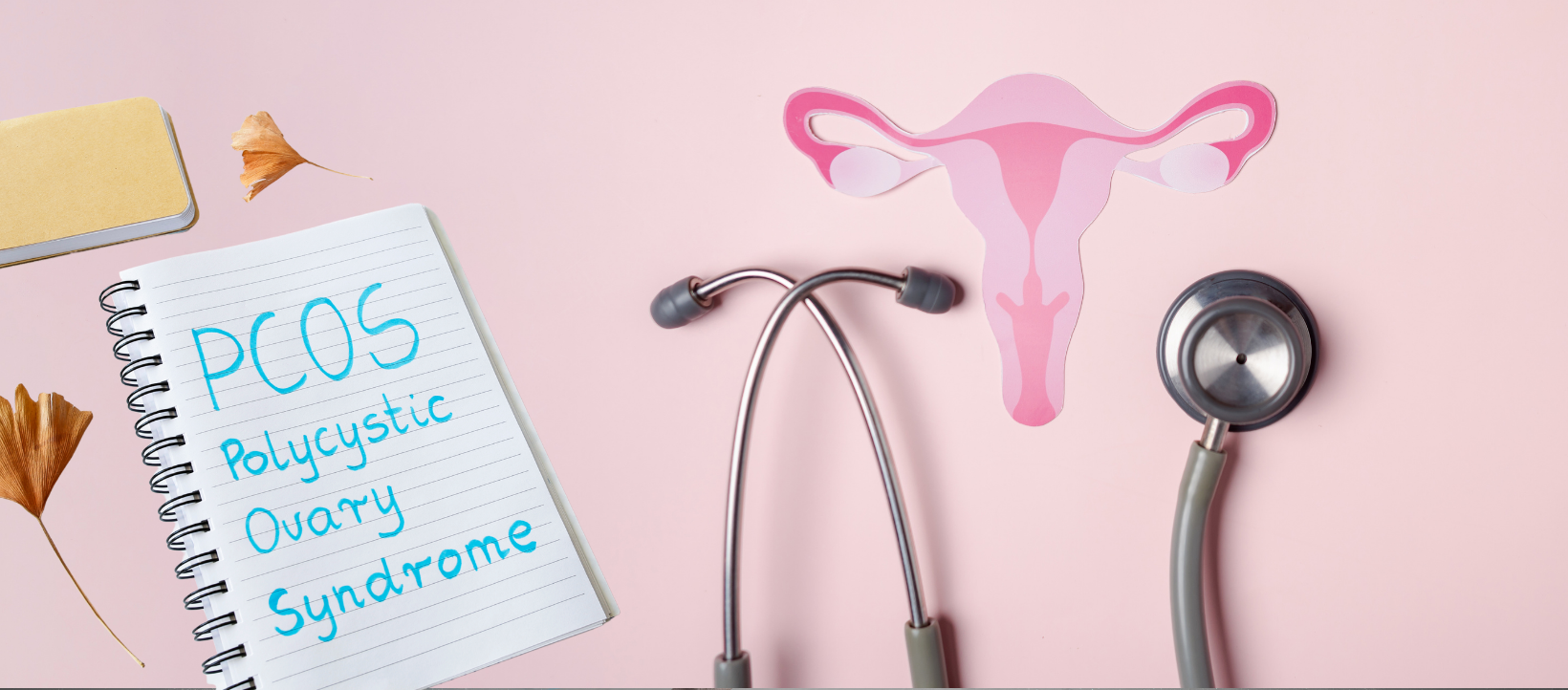
Women suffering from PCOS may also find IF beneficial. As one of the biggest underlying issues for PCOS is insulin resistance, the body counters this by producing even more insulin. But excess insulin stimulates more androgen and testosterone production, not only leading to weight gain but also other issues such as growth of facial hair or acne. IF helps to regulate these hormones, giving a knock-on effect for healthy ovulation and a more regulated hormone production[13].
Depending on what your goal is, IF is widely suitable, partly due to the many types of IF there are.
TYPES OF IF
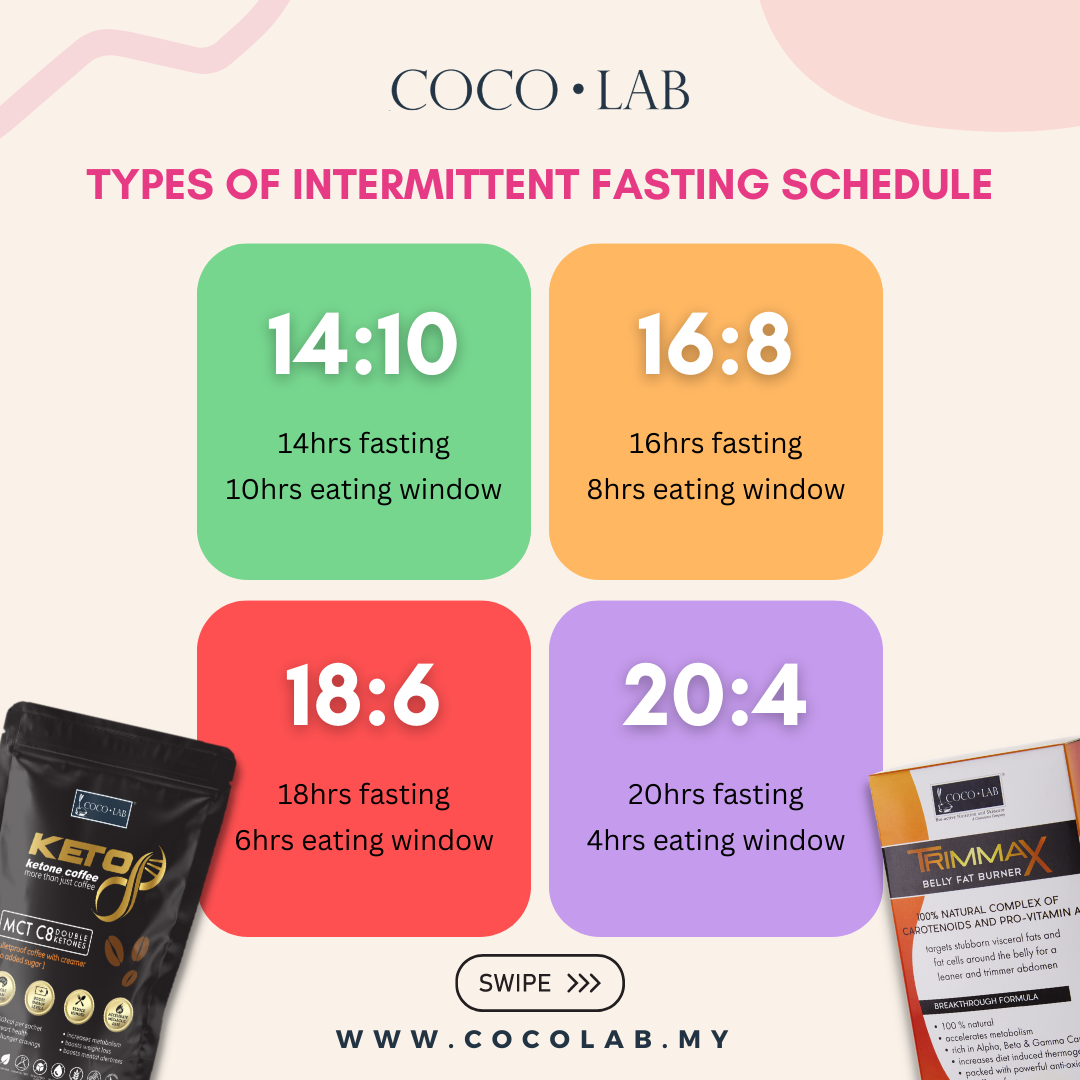
IF types are easily categorized by their hours, typically a longer fasting period to a shorter eating period. You may start off with a shorter fasting period before attempting a longer fasting period, and finally sticking to one schedule that suits your lifestyle. As a general guide, here are some of the most commonly practiced IF types when we look at Time-Restricted Eating (TRE) – determined by hours in a day.
14:10
Typically, most people begin to notice changes with at least 12 hours of fasting. A 14:10 IF has a 14 hour fasting period, followed by an opening of a 10 hour eating period. This is usually the starting point for most people considering to begin IF but it can also differ based on your lifestyle.
16:8
The most practiced type of IF, especially for those who have progressed from shorter fasting periods or those who did not see any results from 12:12 or 14:10. The 16:8 is somewhat the golden ratio since it is most easily practiced by most people on IF. A 16 hour fast and an 8 hour eating window is neither too long nor too short to give your body enough time for fasting and repair.
18:6
18:6 is usually practiced by more serious IF practitioners to reap more benefits of a fasting state. With the 18 hour fast, it is also important to note that your sleeping hours are also included here. Effectively, it could be 4 hours of fasting before bed, 8 hours of sleep, followed by another 6 hours of fasting after you wake up. You finally break fast for 6 hours after that.
20:4
Known as the “Warrior Diet”, 20 hours of fasting is probably the longest of the 4 common types and is usually practiced by very experienced intermittent fasters. It follows an old rule where humans are nocturnal eaters and have a 4 hours eating window at night, typically dinner. But this may be difficult to follow for some, especially if having such a big meal before bedtime keeps you awake.
The 18:6 and 20:4 IF plans are also commonly referred to as OMAD which stands for One Meal A Day. Given the shortest eating window, some practitioners may only be able to consume or fit in 1 meal when they break fast.
*fun fact: During the holy month of Ramadan, Muslims typically fast for 12-20 hours (depending on your location), effectively making Muslims around the world practice a form of IF!
24 Hours Fast
There are also IF types which have 24 hours fast (zero-calorie drinks such as water and tea are allowed) for 1-2 day days per week and during non-fasting days you are allowed to eat at any time you want. This may only be carried out for a few days to a few weeks but generally is not kept as a lifestyle change for long. One advantage, but also its downside, to a 24 Hours Fast is the ability to choose your fasting days according to your schedule giving you more flexibility. However, this gives an easier route to inconsistency as you can easily delay your 24 Hours Fast according to when its convenient.
5:2
A 5:2 IF diet is not determined by hours in a day. Rather it is determined by days in a week. This plan requires you to have 2 low-calorie days in a week, and the remainder 5 can be normal meal servings. Typically on these 2 “fasting” days, you would restrict your diet to 500 calories for men and 600 calories for women. Much like the advantages and disadvantages of a 24 Hours Fast, the 5:2 plan gives you the flexibility to choose your “fast” days but also gives you an easier tendency to “delay” them to a day or week that’s convenient. Calorie-counting in this diet is also crucial which may deter some more care-free IF practitioners.
HOW TO BEGIN IF & HOW TO STICK TO IT
The idea of fasting may seem scary to most people as it feels extreme and some may even argue unhealthy. But remember, this is a conscious lifestyle choice that you eventually fall into habit with and does not restrict you from WHAT you eat.
For some people who are open to the idea of fasting from the get-go, they may even start with the standard 16:8. For others, these IF tips may help your either begin IF and help you stick to it:
- Avoid thinking of it as a Fast – It may seem counterintuitive, but the word fasting does come with some unhealthy connotations. Thinking of IF as something you WANT to do for a lifestyle change as opposed to something you HAVE to do overall helps you maintain it. “I will eat later” as opposed to “I can’t eat at all” is mentally more achievable. As it goes, starting on something that feels forced is never maintained over the long run.
- Start with shorter fasting hours – Start off with shorter fasting hours like 8-10 hours fast, and then eat during the 16 or 14 hours eating window to get into the rhythm of an eating schedule. You can slowly build this up to 12 hours fast, 16 hours fast over the course of the coming weeks. Eventually you will find a schedule that best suits you and your hunger levels won’t go into immediate overdrive.

- Consider your sleeping hours as part of your fast – Fasting hours easily become shorter when you factor in your sleeping hours. A 16:8 IF may only be 8 hours of fasting with another 8 hours of sleep. This can be broken up to 4 hours of fast after dinner, 8 hours of sleep, and another 4 hours of fasting when you wake up. Breaking up the fasting hours between sleep makes it easier to “grasp” the idea of fasting and you’ll get used to it in no time.
- Dirty fast – This involves taking a very small amount of calories mid-fast to get you over the extended fasting period. It can be a small cup of coffee in the morning before you “break” fast around 3pm, just to assimilate into IF better and help you last throughout your fast.

- Choose tastier foods during your eating window – Since we’re given a shorter period of time to eat, we tend to eat less. Choose tastier foods, those with stronger seasoning such as garlic and spices to make the most out of your eating window, giving you the sense that you have had a very satisfying meal. Try reducing bland foods as this may make you “crave” better-tasting meals and could make you fall out of your fasting window.
- Avoid thinking about food – Following a “eat to live, not live to eat” motto is crucial. You don’t have to eat every single time of the day. Fill your time with other activities or work to avoid thinking of eating whenever you feel bored. You can even reward yourself by breaking your fast after you set your mind out to complete certain daily tasks, such as submitting a report or doing the laundry.
- Stay hydrated – Feeling hungry during your fast already? Try drinking water or tea to help you overcome the idea of having something in your stomach. While you are fasting, it is perfectly okay to drink water and it is also highly recommended to stay hydrated throughout IF. There are no rules saying you cannot drink water or tea, but try staying off sugary drinks while starting out IF.

- Add fat to your diet when eating – While most try “water fasting”, research shows that you can still be in a fasting state as long as you don’t take in calories from protein or carbs. Including a healthy fat such as MCT Oil or Coconut Oil in your diet gives your body instant access to ketone energy that can be used while you fast, giving you mental clarity and energy to go about your day while also correcting fatty liver problems[14].

There is no one size fits all approach to IF. Eventually, IF is a lifestyle consideration that YOU are making, so choose one schedule that truly works with your lifestyle and work. While it may be challenging to start IF, take small baby steps to achieve where you want to be. This is a lifestyle change you want to maintain, it’s a marathon in the long run. Not a sprint diet.
People prone to eating disorders should avoid this approach to prevent further exacerbating unhealthy food relationship. People with other underlying health conditions such as diabetes should talk to their medical practitioner before attempting IF.
All in all, keep a healthy diet when practicing IF. Remember to have your key nutrients in when you break your fast and always drink plenty of water.
Check out some easy to follow meal plans with IF here:
